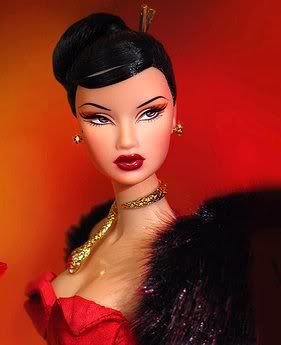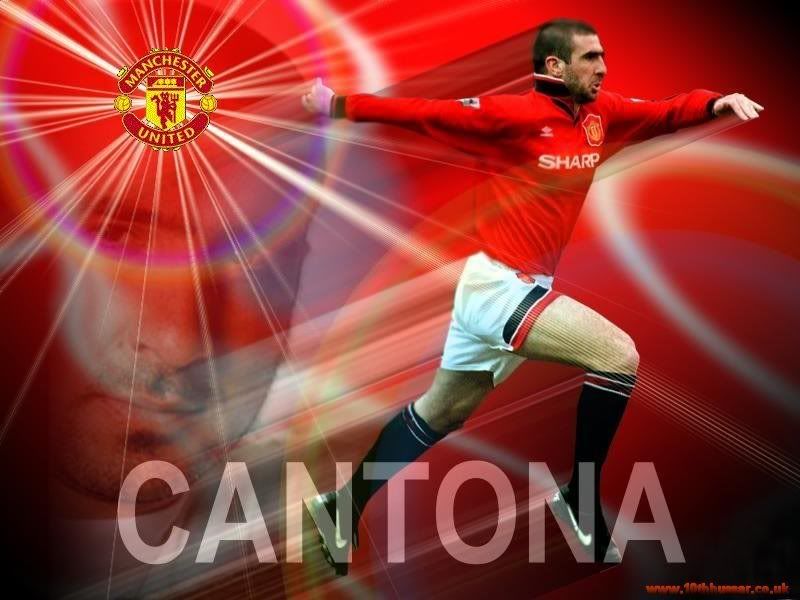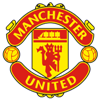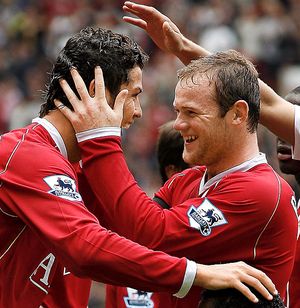Post by REdBloodED woMan on Nov 18, 2007 15:18:02 GMT

[glow=red,2,300]"The most handsomest, the most spacious and the most remarkable arena I have ever seen. As a football ground it is unrivalled in the world, it is an honour to Manchester and the home of a team who can do wonders when they are so disposed"[/glow]
Sporting Chronicle: Saturday 19th February 1910
The above words were written on Old Trafford's opening day in 1910. Manchester United had just moved from their old stadium of Bank Street, Clayton, to a new stadium in the Old Trafford area of west Manchester. Built in 1909, for the then huge sum of £60,000, it was terraced on three sides with a seated main south stand under cover. The stadium had a maximum capacity of 80,000 and was designed by famous Scottish architect Archibald Leitch, who also designed stands at Hampden Park, Ibrox Stadium and White Hart Lane.
In 1911 and 1915 it held the FA Cup final and in 1920 it had it's largest ever attendance of 70,504 for a league game against Aston Villa. The 1939 FA Cup Semi-Final of Wolves vs Grimsby would top that with 76,962, a figure which stands to the present day. The original Leitch south stand roof was replaced in the 1930's. The south stand corners were also covered and a partial roof was added on the north side. The stadium was heavily damaged in World War II and for a while United played at local rival, Manchester City's Maine Road from 1946-1949 whilst rebuilding work took place.
In 1949 when it reopened, Old Trafford had been rebuilt exactly as it had been before the war. A roof was later added to the Stretford End in the 1950's, however all the stands suffered from obstructed views because of old fashioned roof-post design. In the mid 1960s development of modern cantilever stands began on the north and east of the ground in time for the World Cup.
The new design had terracing at the front and a larger seated section behind. The master plan of club owners, the Edward's family, was to eventually have cantilever stands on all four sides of the ground. Old Trafford was a venue for the 1966 World Cup hosting three matches and also held the 1970 FA Cup Final replay between Chelsea and Leeds. It also became the first stadium to erect perimeter fencing in the 1970's to combat crowd disturbances. Gradually the entire ground was redeveloped with cantilever roofing over the decades, culminating in 1994 with the Stretford End.
The west side of the ground for many fans, will always be the legendary Stretford End. Crammed behind the goal was a heaving mass of almost 20,000 standing United fans who were amongst the loudest in Britain. It was once measured that the roar from the crowd was louder than a Jumbo Jet taking off. The last game played in front of the famous old terrace was a 3-1 win over Spurs on 2nd May 1992. The new £10 million all-seater cantilever stand was completed for the start of the 1993-94 season and had a family seating area. Beneath the corner is the players dressing rooms/tunnel and lounge.
In the 1960s, 70s and 80s, over 58,000 could pack into Old Trafford. However in the early 1990s after the Hillsbrough disaster, the Taylor Report required England's top teams to have all-seater stadiums. The Old Trafford design master plan of the 1960's was now complete and the stadium was a perfect bowl, but with United more popular than ever the reduced 44,000 capacity was totally inadequate.
This led to further expansion in 1995-6 with the construction of the giantantic three-tiered North Stand, holding 26,000 and bringing capacity to nearly 56,000. The North Stand, reaching around 200 feet in height has four stairwell towers, several lifts and the largest single cantilever roof in Europe.
This massive, brooding structure towers over the pitch, intimidating opposing teams. Costing £19 million to build (plus £9 million to buy the land) it also houses the excellent Manchester United Museum on three floors (open on non-match days) and glittering trophy room. There is also the Red Cafe restaurant and two layers of executive "Sky" boxes. The stand sits over the top of United Road, which runs through a tunnel underneath.
The South Stand is the smallest stand at Old Trafford but contains the managers bench area, the directors/ television/ police control boxes and luxury restaurants and executive suites. It is rarely seen on television as it contains the TV gantry, which looks North. The players tunnel used to be at the centre of this stand but in 1993 it was moved to the South-west corner. The old tunnel still remains and is opened for special occasions and stadium tours. The seating slopes at a different angle to the rest of the stadium, making it slightly lower than the other stands. The first 20 or so rows of seats around all four sides of the ground are below street level.
The East Stand was home to the diehard K-Stand United fans (many of whom have relocated to the Stretford End) as well as the away fans enclosure in the South-East corner and disabled section. It was formerly known as the Scoreboard End, so called because of the large scoreboard that resided until the late 60s, when an electronic one was installed. This scoreboard was recently replaced by four modern electronic scoreboards situated around the stadium.
As part of a £30 million redevelopment to put a second tier at each end, in January 2000, the East Stand upper deck was opened creating a 61,000 capacity. On its outside is a large tinted glass front, similar to a modern office block. Below is the location of the huge Manchester United Megastore where every conceivable type of club merchandise is available. On top of the Megastore entrance is the Sir Matt Busby statue. Unveiled in May 1996 he gazes proudly over the forecourt adjacent to the road that bears his name, Sir Matt Busby Way. Off to the left side is the Munich Memorial plaque and the famous Munich clock commemorating the air crash on 6th February 1958 is at the South-East corner.
In August 2000 the second tier of seating was added to the Stretford End / West Stand bringing a total capacity of 68,217. You can also see many banners draped over the upper deck, created by United fans to celebrate past history and taunt rivals. A statue of 60's striker Denis Law in the upper concourse was placed there in 2002 - Law was known as "The King of The Stretford End".
Many claim the atmosphere at Old Trafford is not as good as it once was. Ironically it is the legend of the Old Trafford atmosphere that has brought the tourists yet they are partly responsible for its decline. Sir Alex Ferguson has often complained about the lack of singing and low noise levels but a designated singing area in the West Stand upper tier has made it the loudest part of the ground.
Old Trafford was a Euro 96 venue hosting five games including a Semi-final. It's also been an annual venue for one of the FA Cup Semi-final's and regular home for the England international team home matches. On 28th May 2003 the stadium had the honour of hosting the Champions League Final between AC Milan and Juventus, which Milan won 3-2 on penalties after a 0-0 draw.
In 2005 a £45 million development began to fill in the corners at the North-West and North-East Quadrants, creating a 76,211 capacity by May 2006 and restoring the "bowl" effect on two thirds of the ground. Expansion work on the South side is not planned in the immediate future because of restricted space and cost. The nearby railway track could be built over, but the club would have to buy up to fifty nearby houses at great expense and disruption to local residents.
A total of £114 million has been spent by the club in the last 14 years on stadium redevelopment but the total cost for a new South Stand would almost equal that sum again with estimates in the region of £90-100 million. However, the long-term goal for the club must remain to rebuild the South stand in a similar style to the North and with filled SW/SE corners would make a whopping 96,000 all seater capacity - larger than the new 90,000 Wembley.
Old Trafford is undoubtedly one of the greatest and most famous sporting arena's in the world. In an era where many clubs are moving from their traditional homes and although down the years it has changed beyond all recognition, the magic of Old Trafford will always remain. On a big match day or European night the atmosphere is as good as any venue in world football. The Theatre of Dreams (as Bobby Charlton named it) is the biggest club ground in Britain and a fitting home for the world's most famous football club















